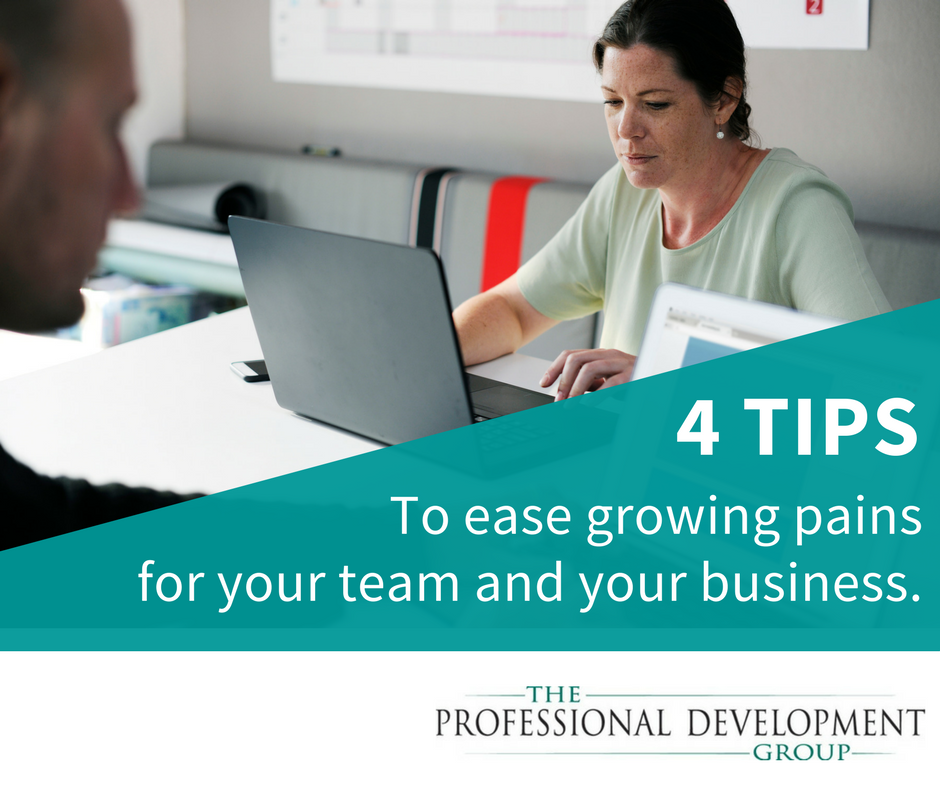This article was originally published on Forbes. Read it here!
Growing pains can be both exciting and challenging. It’s a thrill to see tangible proof that your business is succeeding. At the same time, finances, resources and people get stretched. Business owners committed to being profitable seek out experts to help them get the right balance between increasing revenue, investing in expansion, and paying bonuses. Getting professional advice on matters related to team development is equally as important.
It can be a costly mistake not to consider the culture and team that will grow your business.
One company I worked with had steadily expanded until it hit a growth ceiling. Company leaders couldn’t understand why revenues remained at the same level for three years in a row. A staff engagement survey revealed a number of issues that the leaders felt ill-equipped to handle. Fortunately, the COO had the presence of mind to seek out coaching in developing a high-performing team and culture.
During our work together, I introduced the leaders to four important concepts that helped them realign the organization. The result was, within the first year, this business pushed through its growth ceiling and dramatically expanded its client base.
If you’re a leader of a small to mid-size company that wants similar results, use these four tips to intentionally maximize your greatest resource: your people.
1. Create a culture that plays to everyone’s strengths.
To do this, you need to know the strengths, motivators and blind spots of everyone on your team -- including yourself. Sophisticated assessments can reveal this information quickly. Armed with data about individuals and the group as a whole, you can raise everyone’s awareness of how they work best. You’ll also be able to match people with roles where they’ll naturally excel.
What happens if you don’t know the strengths of your team members? Many leaders assume everyone is motivated by the same thing that motivates them, such as money or serving people. This mistake can result in low engagement and high turnover. And, when you put the wrong people in key roles, errors multiply, morale suffers, and both customers and team members become disgruntled.
Build a culture where people love what they do and there will be less focus on the pain of growth and more focus on winning together.
2. Create organizational alignment and clear expectations about job performance.
If everyone from the CEO on down has clear key accountabilities, it’s easier to see how each role is aligned with the company’s goals. Reviewing all accountabilities every 12 to 18 months allows you to adjust priorities and note what tasks are falling through the cracks.
Key accountabilities also spell out what it means to be successful in a role. So often, annual reviews generate ill will because leaders make subjective judgments (often tied to bonuses) about whether someone has (or has not) met or exceeded expectations. If expectations are never formally spelled out, how can anyone hope to meet or exceed them? You have to know what success looks like in order to achieve it.
What happens if you don’t use key accountabilities? You may struggle with performance evaluations and your team members may not know how to meet your expectations. This will erode morale over time. Also, as you add new team members, you may not notice job overlap or specify who owns what responsibilities, causing needless confusion and conflict. As priorities shift, you may also neglect to see that tasks and goals are no longer aligned.
Use and continually review key accountabilities to make sure everyone is clear about how to grow and succeed as a person, a team and a company.
3. Plot out a growth chart.
Once people have mastered a role, they usually want to know what’s next. Encourage professional development conversations to get a read on what people’s aspirations are, and craft career paths for them within the company. Encourage new hires to experiment with assignments that could help them grow.
What happens if you don’t map out a future for your team members? Your best assets will look for opportunities elsewhere.
Think about succession planning for leadership positions as the company grows.
4. Hire intentionally.
Stop relying on resume roulette and interview intuition to fill key positions in your company. Use hiring tools that will help you create a profile of each position and find the best candidate match.
What happens if you don’t adopt better methods for hiring? You risk putting people into the wrong roles and then having to performance manage them out of the organization. That creates pain for everyone.
Get up to speed on the best methods for hiring so it feels less like a crap shoot to bring on new team members.
People with the skills and drive to start a business may not have a clue about how to create a work culture where team members thrive. That’s okay. No one is a master of everything. The key is to value team development as much as you value business development because it, too, can have a significant impact on your bottom line. Get expert advice about how to structure organizational growth so you can significantly minimize the growing pains that can accompany success.

